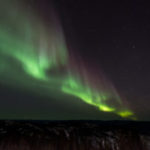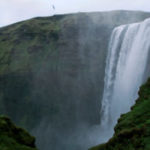
Progress can be slow. Promising ideas, more often than not, lead nowhere. That’s the nature of scientific research. Yet, even during periods of minimal progress, I’ve found that the effort spent puzzling and calculating has only made me feel a closer connection to the cosmos. I’ve found that you can come to know the universe not only by resolving its mysteries, but also by immersing yourself in them. – Brian Greene
It’s easy to think we understand the workings of the world. The truth is it’s more complicated than we imagine, and the labels and categories we put on what we see can be deceiving. It may help us make sense out of a vast amount of information, but labels can create a false sense of separation between us and everything we see. At first glance it’s easy to think that meditation and physics have nothing in common. They seem to inhabit two completely different stratospheres, when in actuality they are just two aspects of the same thing, our desire to go deeper and know more. It just so happens that they approach knowing more in their own unique way. Eastern and Western thought are actually quite similar, they’ve just started from opposite standpoints, Eastern thought begins from within and Western thought from without. But no matter which side we start from, inner or outer, the other side has to come into play if we are to see the whole picture.
If you’re wondering what physicists do all day, I can tell you, it’s one long meditation on the universe. Ruminating on the minute details of the workings of Nature (physics), versus meditating on the minute workings of the Self (meditation), is really just a matter of splitting hairs. Yes there’s the math, a lot of complicated math, but in order to get to the math there has to be an idea that’s testable. Coming up with the idea is where meditation comes in, it’s all that deep thinking and contemplation that is required to see farther into the way Nature (and ourselves) works. The Eastern way of thinking looks within which leads to explaining the world around us, Western thought looks to Nature to discover the secrets of the universe, which inevitably leads back to telling us more about ourselves. It’s all beautifully and intricately interconnected. Still, with all that looking inside and out, we know very little about the universe and ourselves. Maybe because it’s a bit of a guessing game, it’s theory and hypothesis. It isn’t that the universe opens all the doors to Her many mysteries and offers them up, you need physics-style meditation to reveal the answers to those secrets. This meditation comes in the form of ruminating, contemplating, and looking to the way Nature works until a new connection dawns. It’s is a form of meditation that opens the thinker up to possibilities never before realized or expected. And just as Brian said in the quote, it opens deeper vistas and startling connections that expand the thinker as well.
I can tell you that meditation Eastern-style does just the same thing. It expands inner boundaries and paves the way to a more crystalline form of understanding, we begin to see things as they are rather than how we wish they were. There is a freshness and exhilaration in going deeper and making connections that seem unlikely and yet are so sublime and fulfilling. Each has it’s own language. Physics uses complicated symbolic code, long lines of equations where each little symbol tells more than a five page written interpretation of it ever could. We see that same code has been repeated throughout history. Whether it’s a sutra, or a koan, or the caves of Lascaux, there’s a parallel between all of them, it’s complex ideas about who we are and what we know being condensed into a word, a few paradoxical lines of writing, or drawn out on cave walls. It’s the best expression of the unknown available to us at the time. That is all we are doing today, the very same thing we’ve done for centuries, immersing ourselves in the magic and mystery of making sense of our lives, the universe, and where we fit into the larger scheme. All of us, through all of time, are trying to understand our lives and our role in the greater drama.
At Lascaux you have to squeeze through a narrow passage before opening out into the main hall. The idea is we need to birth a new way of thinking in order to see deeper truths. That’s how new connections are made, on a very thin bridge between what we know and all that still remains unknown. It requires a mystical mindset, it requires meditation. Physicists are Western-style meditators pushing us to think more openly, contemplate more deeply, and to expand the boundaries of the known. This orientation to a more expanded way of thinking is the container we need to decipher the mysteries of the universe. The universe is now the chamber in which we learn to go beyond what we know, and think we know, to get to the larger connections that will take us into the next phase of understanding. It’s our Lascaux. What’s needed to get us there is a different kind of thinking. We have that tool already, one that’s been honed for thousands of years, it’s meditation. That is the link to getting us to see not only more of the workings of ourselves, but more of the workings of the universe.
We may meditate in different ways, but ultimately it’s the same technique that leads us to greater understanding.
kb





